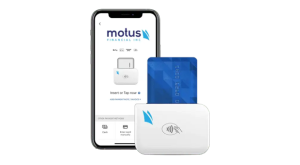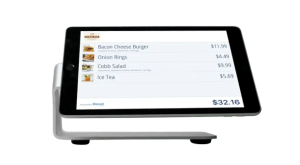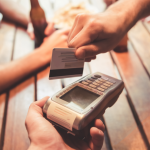9 Interesting Credit Card Facts and Stats
Cash is dying. Long live plastic. Love them or hate them, soon, credit card or mobile payment solutions will be the only acceptable payment from many merchants. In 2017, the total value of credit card transactions in the U.S. alone was $3.05 trillion. Along with increasing transaction volumes, more than two-thirds of all in-person sales were made with a credit card, while only 27% were made with cash.
Credit cards are everywhere. They are used to buy just about anything, and they are here to stay. So it’s smart to learn a little about how they work. Here are a few surprising facts and statistics about credit card usage.
1. Your credit card doesn’t really have an expiration date
Yes, it says so on your card, but you could continue using it after the expiration date. Have you ever notice how the number on your replacement card is the same? The expiration date on your card fills two main purposes. First, it is an estimate of the lifetime of your credit card and gives your credit card issuer a date to send you a new card. Second, it is used for online and over-the-phone purchases when the merchant cannot see your card. Asking for the expiration date allows the merchant to confirm you are the owner of the card and have it in your possession.
2. There are enough credit cards in circulation to span the earth more than 3.5 times
According to the financial reports of the three largest credit card companies in the world, there were over 1.65 billion cards in circulation in 2017: Visa had 827 million, Mastercard had 718 million, and American Express had 109 million. If you placed all those cards end to end, at 3.375 inches each, you could span 88,050 miles: the equivalent of three and a half trips around the world.
Sources: CreditCards.com
3. Sears is one of the founding fathers of plastic
It is hard to believe now, but Sears was once American’s golden retailer. The arrival of Sears catalog was a special day in many households and the Christmas catalog was what children’s dreams were made of.
Sears devised the first retail store card back in 1911. The card continued in service until 2003, when Citigroup bought Sears’ card and its membership list. Sears also launched the Discover Card. It was announced during the 1986 Super Bowl. That was one year before American Express launched its first credit card, when Mastercard and Visa controlled the entire credit card business.
4. The first credit card could only be used in New York restaurants
In 1950, Frank McNamara, head of Hamilton Credit Corporation, founded the Diners’ Club Card: the first card that could be used in multiple locations. He had the epiphany of starting a credit card company after a business meal at the Major’s Cabin Grill, a popular New York restaurant. Before going to the restaurant, he had changed suits and left his wallet in his other suit (that was his excuse anyway). When he realized he had forgotten his wallet, he though about how useful it would be to have a card you could use instead of cash.,
Although it could only be used at 28 restaurants and two hotels, it became a status symbol among the New York’s business elite, and grew to 10,000 members within the first year.
5. The creator of the first credit card thought credit cards were just a fad
Although McNamara had the vision to see how convenient credit cards could be, he still thought credit cards would be just another fad. He sold his share in Diners Club for $200,000 – the equivalent of $1.6 million in today’s money. By the mid-1960s, Diners Club had 1.3 million cardholders and was accepted throughout the world.
6. The first general-purpose credit card was sent as junk mail
In 1958, Joseph P. Williams, a Bank of America employee, had the bright idea of mailing 60,000 genuine BankAmericard credit cards to people in Fresno, California. The cards, which were made of paper and had a pre-approved credit limit of $300, were totally unsolicited. By October 1959, Williams had managed to distribute 2 million credit cards to people all over California. Unfortunately for Williams and Bank of America, 20% of all credit accounts became delinquent, which meant Bank of America lost $8.8 million during the launch of the new card and Williams lost his job. Today, mailing unsolicited credit cards is illegal, although sending pre-approved applications is just fine.
7. Credit card companies spend around $80 to acquire each carduser
Credit cards spend an average of $80 in marketing and administrative costs to acquire every new customer, according to a 2017 report by the Database Marketing Institute. As long as customers keep their cards, credit card companies don’t mind. Every customer provides an average return of $120 a year.
8. The first two digits on your credit card identification number identify the type of industry that issued the card
If your credit card number starts with a 1 or a 2, it was issued by an airline. Number 3 is for companies in the travel and entertainment industry; all American Express® and Diners Club cards start with a 3. Numbers 4 and 5 are for banking institutions. If it starts with a 4, you have a Visa card. Number 5 is for Mastercard. Number 6 is for merchandising and banking; 7 is for gas cards; 8 is for telecommunication companies; and 9 is used for national assignments.
Check out this infographic for what all those numbers on your credit card mean.
9. You can validate a credit card just by adding it’s numbers
By following the Luhn algorithm, a simple checksum you can easily check a credit card number is valid. This is how it works. Starting from the right, double every other digit on your credit card. Now, add the doubled digits to the ones you didn’t double. Note that if you have a double digit number such as 15, you must use the sum of its digits. For instance, 15 is 1+5=6. If the total sum is divisible by 10, it is a valid number. This method only protects against accidental errors, such as transposing the order of the numbers when reading them out over the phone. It was not designed to protect against sophisticated criminal attacks.
Learn 10 surprising credit card facts that can help you save money and boost rewards.
References:
https://www.valuepenguin.com/largest-credit-card-issuers
https://www.creditcards.com/credit-card-news/credit-card-use-availability-statistics-1276.php
https://www.cardrates.com/news/credit-card-companies/
https://www.frbsf.org/cash/publications/fed-notes/2017/november/understanding-consumer-cash-use-preliminary-findings-2016-diary-of-consumer-payment-choice/
https://www.statista.com/statistics/279249/purchase-transactions-on-general-purpose-cards-worldwide/








 Our POS systems are designed to streamline in-store transactions. With features like inventory management, sales reporting, and customer tracking, our POS solutions help you run your business more efficiently. Our terminals are compatible with various payment methods, including chip cards, contactless payments, and mobile wallets.
Our POS systems are designed to streamline in-store transactions. With features like inventory management, sales reporting, and customer tracking, our POS solutions help you run your business more efficiently. Our terminals are compatible with various payment methods, including chip cards, contactless payments, and mobile wallets.
